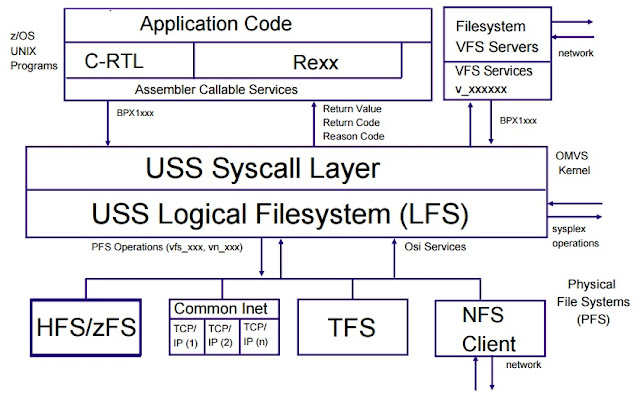JCL Syntax
Now that you've run the JCL and seen that it works.
First, you'll notice that most lines start with two slashes. The two slashes mark a line as part of JCL. Lines that do not contain those slashes, such as the last two lines in this job, are usually embedded input files.
//TSOJOB JOB CLASS=A,NOTIFY=&SYSUID,MSGCLASS=H
- This line is the job header. It defines a job called TSOJOB.
- The CLASS parameter specifies the job's priority, the maximum amount of resources the job is allowed to consume, and so on. A is a good default in most installations, at least for the short jobs we'll use in this book.
- The NOTIFY parameter specifies that a user should be notified when the job ends. It could be the name of a user to notify, but here it is &SYSUID, which is a macro that expands to the user who submits the job.
- The MSGCLASS parameter specifies that the output of the job needs to be held. This makes it accessible afterward, as you will see in Section 1.3.5, "Viewing the Job Output."
// EXEC PGM=IKJEFT01
This line starts an execution step—a step in the batch job that runs a program. It is possible for these steps to be named using an identifier immediately after the two slashes. However, this is a very simple job, so there is no need to identify this stage.
The program that this step executes is IKJEFT01, which is the TSO interpreter.
//SYSTSPRT DD SYSOUT=*
This line is a data definition. It defines the data stream called SYSTSPRT, which is the output of TSO. SYSOUT=* means that this data stream will go to the standard output of the job. In the next section, you will learn how to get to this output to read it.
//SYSTSIN DD *
This line is another data definition. It defines SYSTSIN, which is the input to the TSO interpreter. The value * means that the text that follows is the data to be placed in SYSTSIN.
SEND 'Hello, World' U(ORIPOME)
/*
This is the input to the TSO interpreter. The first line is a command, the same "Hello, World" command we executed in Section 1.2.3, " 'Hello, World' from TSO." The second line, /*, is a delimiter that means the end of the file.



